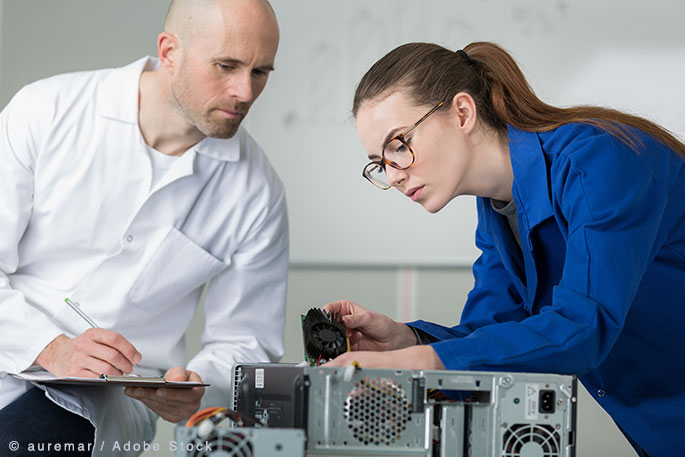
What’s the problem with e-waste? Electronic devices are packed with a slew of chemicals and elements. Most cell phones contain over 500 components; a typical phone contains over 40% alloyed metals and 17 rare earth elements (most of which are non-recyclable). Plastic cases are coated with polybrominated flame retardants, which are toxic to the environment.
To recycle electronics properly, each individual component must be separated out. Unfortunately, only 15-20% of e-waste is recycled globally, in part due to the costly, labor-intensive process. Instead, e-waste is often shipped to China, India, and parts of Africa, where environmental laws are laxer or nonexistent. Scavengers pull out about $6USD worth of reusable parts for every computer. However, the bulk of the discarded material is burned and toxic chemicals leach into the air and water.
Circular Economy Concepts
A circular economy, in the words of the Ellen MacArthur Foundation, “aims to keep products, components, and materials at their highest utility and value at all times.”
Put simply, a circular economy prolongs a product’s lifespan through repair, reuse, remanufacturing, refurbishing, and recycling. Waste is designed to be minimized or redirected to other industries which can utilize the raw materials.
Recently, zero waste planning staff from Vancouver reviewed the International Organization for Standardization (ISO)’s Product Use Instructions Guide. The ISO guide gives guidance to product designers, manufacturers and importers on the best way to inform customers and end users on how to correctly and safely use their products. After finding that the existing guide — last revised in 2012 — is still focused on a linear economic model of “Take-Make-Waste,” the group advocated for circular principles to be put into place. In particular, the group recommended that “product use instructions educate users about how to manage broken and unwanted products, and emphasize options for reuse, return through take-back programs, and recycling ahead of disposal and destruction.”
Why repair electronics?
Repairing electronics, rather than discarding them, is the first line of defense in a circular economy. Repair can be as simple as replacing or upgrading the battery in a device and prolongs the device’s life
Many companies don’t provide repair parts and documentation to end users of electronics. The battery in an iPod isn’t user-serviceable, for example.
Enter iFixit, a wiki-based site dedicated to teaching people how to fix almost anything. iFixit provides detailed repair instructions on how to replace the battery on an iPod and how to fix a Mac. Anyone can submit a repair guide, or edit and improve existing repair guides for thousands of devices.
If we collectively double the lifespan of the average device, we can halve the amount of e-waste created.
How can companies contribute?
While “greening” the electronics industry requires significant changes throughout the manufacturing supply chain as well as throughout the product lifecycle, individual companies can take steps to make a difference.
- Donate used company gadgets to iFixit’s University Tech Writing Program to support education and help write more critical electronic repair instructions. Students hone their technical writing skills; people around the world gain a comprehensive set of repair guides, and more devices are kept out of landfills.
- Community-minded companies can sponsor an event or provide a meeting space for a local Repair Cafe. Founded in 2009, Repair Cafe is an international organization which organizes community-led events for repairing household items, including electronics. Search for one of 1,462 Repair Cafe’s worldwide.
- Educate employees on the value of repairing electronic devices. Provide collection points for employees to recycle or donate their electronics.
- Contact waste recycling facilities. Some companies may be willing to buy used electronics for refurbishing.
- When needing to purchase new electronic devices, choose devices that have the three necessary design features, according to the Ellen MacArthur Foundation: material choices, design for recycling, and software compatibility.




































































































































 Three Ways to Engage Teams and Clients to Maximize Your Recycling Program Engagement
Three Ways to Engage Teams and Clients to Maximize Your Recycling Program Engagement  How to Integrate Accessibility Into Your Sustainability Planning
How to Integrate Accessibility Into Your Sustainability Planning  Why Park Benches Can Promote Workplace Well-Being
Why Park Benches Can Promote Workplace Well-Being 
